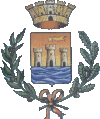Sperlonga
| Sperlonga | ||
|---|---|---|
| Comune | ||
| Comune di Sperlonga | ||
 |
||
|
||
| Location of Sperlonga in Italy | ||
| Coordinates: 41°16′N 13°26′E / 41.267°N 13.433°E | ||
| Country | Italy | |
| Region | Lazio | |
| Province / Metropolitan city | Latina (LT) | |
| Government | ||
| • Mayor | Armando Cusani | |
| Area | ||
| • Total | 18 km2 (7 sq mi) | |
| Elevation | 55 m (180 ft) | |
| Population (31 March 2015) | ||
| • Total | 3,353 | |
| • Density | 190/km2 (480/sq mi) | |
| Demonym(s) | Sperlongani | |
| Time zone | CET (UTC+1) | |
| • Summer (DST) | CEST (UTC+2) | |
| Postal code | 04029 | |
| Dialing code | 0771 | |
| Patron saint | St. Leo and St. Roch | |
| Saint day | September 2–5 | |
| Website | Official website | |
Sperlonga is a coastal town in the province of Latina, Italy, about halfway between Rome and Naples.
Surrounding towns include Terracina to the West, Fondi to the North, Itri to the North-East, and Gaeta to the East.
Located near the Via Appia, but also on the edge of the Pontine Marshes, Roman "Spelunca" (Latin for cave or grotto) was only known for the grotto on the coast, after which it was named. A later Republican villa was probably later owned by the emperor Tiberius (41°15'2.58"N 13°27'3.88"E), including the grotto.
After the fall of the Western Roman Empire, in the 6th century, the ruins of the imperial residence served as refuge for local people. Later the population began to move to the nearby promontory of St. Magnus, in order to escape the unhealthy marshes and the Saracen attacks. The danger posed by the Saracens is made clear by the presence of many watchtowers all along the coast to Gaeta. In 1534 the small centre was destroyed by the Ottoman fleet under Barbarossa.
In the 18th and 19th centuries Sperlonga recovered and acquired some noble residences, and agriculture flourished. However, the touristic expansion occurred only after the opening of the Terracina-Gaeta coastal road (also known as the ) in 1957, the building of which led to the discovery of the sculptures in the grotto.
Sperlonga's main cultural attraction is the museum erected in the grounds of the former Villa of Tiberius showing the groups of sculpture found in the grotto celebrating the deeds of Odysseus. According to Tacitus and Suetonius, the roof of the grotto collapsed while Tiberius was dining, and Sejanus rushed to save Tiberius, for which Tiberius in gratitude promoted him, launching his rise to power. Tiberius moved to Capri after 26 AD.
...
Wikipedia


